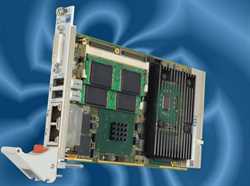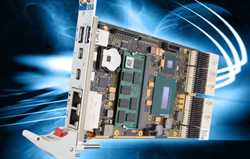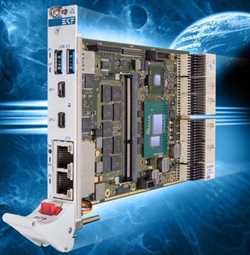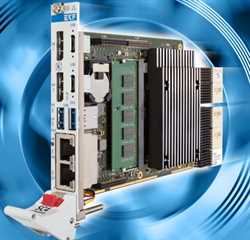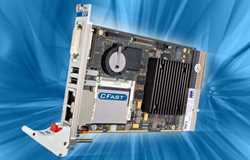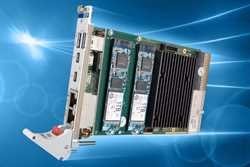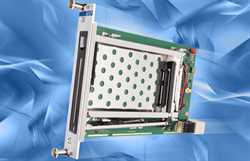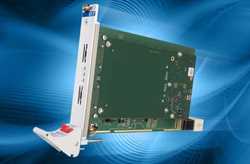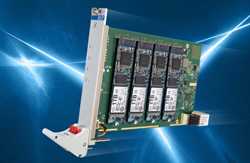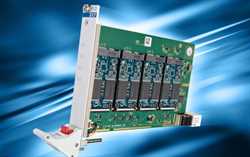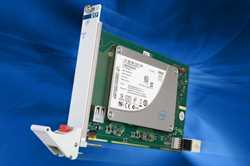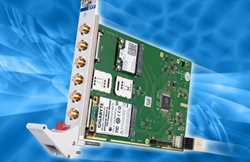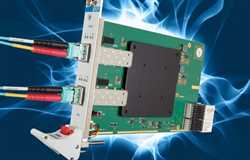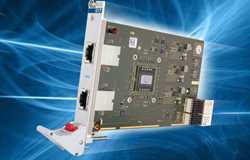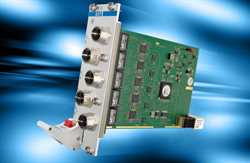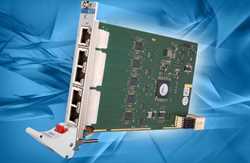EKF CCJ-RHYTHM Compact PCI Express System Slot Controller Mezzanine I/O Companion Board
BRAND : EKF
Available as a mezzanine add-on companion board to the CCG-RUMBA card, the CCJ-RHYTHM enables the CCG-RUMBA to act as a system slot CPU simultaneously for both a CompactPCI backplane, and in addition a CompactPCI Express backplane. In order to simplify system integration, suitable all-in-one (heterogeneous) backplanes are available from independent vendors, which allow insertion of classic CPCI I/O boards (left from CCG-RUMBA) as well as high speed CPCIe cards (right to CCJRHYTHM). The user profits from such a hybrid solution by combining low cost CPCI modules, available from numerous vendors, with the advanced features of CPCIe boards in a single system, thus providing maximum flexibility. The CCJ-RHYTHM will be attached on top of the CPU board, and shares its front panel typically with the host carrier (8HP front panel width in total). Interconnection between the CCJRHYTHM I/O module and the CPU carrier board is achieved by several expansion connectors, which comprise the PCIe (PCI Express), LPC (Low Pin Count), PATA/IDE and SDVO interfaces
The heart of the CCJ-RHYTHM is a 6-port 24- lane PCIe packet switch. One port is used as a link to the PCIe host (which is the ICH8M-E on a CCG-RUMBA). Four ports establish the CompactPCI Express system slot interface (4-link configuration pin assignments). The remaining port is used locally by a IEEE1394 bridge. In addition to its CPCIe system slot function, the CCJ-RHYTHM is provided ...
Details
Available as a mezzanine add-on companion board to the CCG-RUMBA card, the CCJ-RHYTHM enables the CCG-RUMBA to act as a system slot CPU simultaneously for both a CompactPCI backplane, and in addition a CompactPCI Express backplane. In order to simplify system integration, suitable all-in-one (heterogeneous) backplanes are available from independent vendors, which allow insertion of classic CPCI I/O boards (left from CCG-RUMBA) as well as high speed CPCIe cards (right to CCJRHYTHM). The user profits from such a hybrid solution by combining low cost CPCI modules, available from numerous vendors, with the advanced features of CPCIe boards in a single system, thus providing maximum flexibility. The CCJ-RHYTHM will be attached on top of the CPU board, and shares its front panel typically with the host carrier (8HP front panel width in total). Interconnection between the CCJRHYTHM I/O module and the CPU carrier board is achieved by several expansion connectors, which comprise the PCIe (PCI Express), LPC (Low Pin Count), PATA/IDE and SDVO interfaces
The heart of the CCJ-RHYTHM is a 6-port 24-
lane PCIe packet switch. One port is used as a
link to the PCIe host (which is the ICH8M-E on a
CCG-RUMBA). Four ports establish the
CompactPCI Express system slot interface (4-link
configuration pin assignments). The remaining
port is used locally by a IEEE1394 bridge.
In addition to its CPCIe system slot function, the
CCJ-RHYTHM is provided with high-speed
communication channels such as FireWire and
USB, and common legacy I/O ports as well
(COM, LPT). Optionally, a DVI connector allows
for dual screen video operating mode.
As an option, the CCJ-RHYTHM is available with
a rugged on-board 2.5-inch PATA hard disk (or
even Flash) drive. Alternatively, either a
CompactFlash card adapter, or an 1.8-inch hard
disk can be accommodated, as a mezzanine
module, and in addition an USB Solid-State Disk
(SSD) module. Another option available is the
Trusted Platform Module according to TPM 1.2
for safety critical applications.
